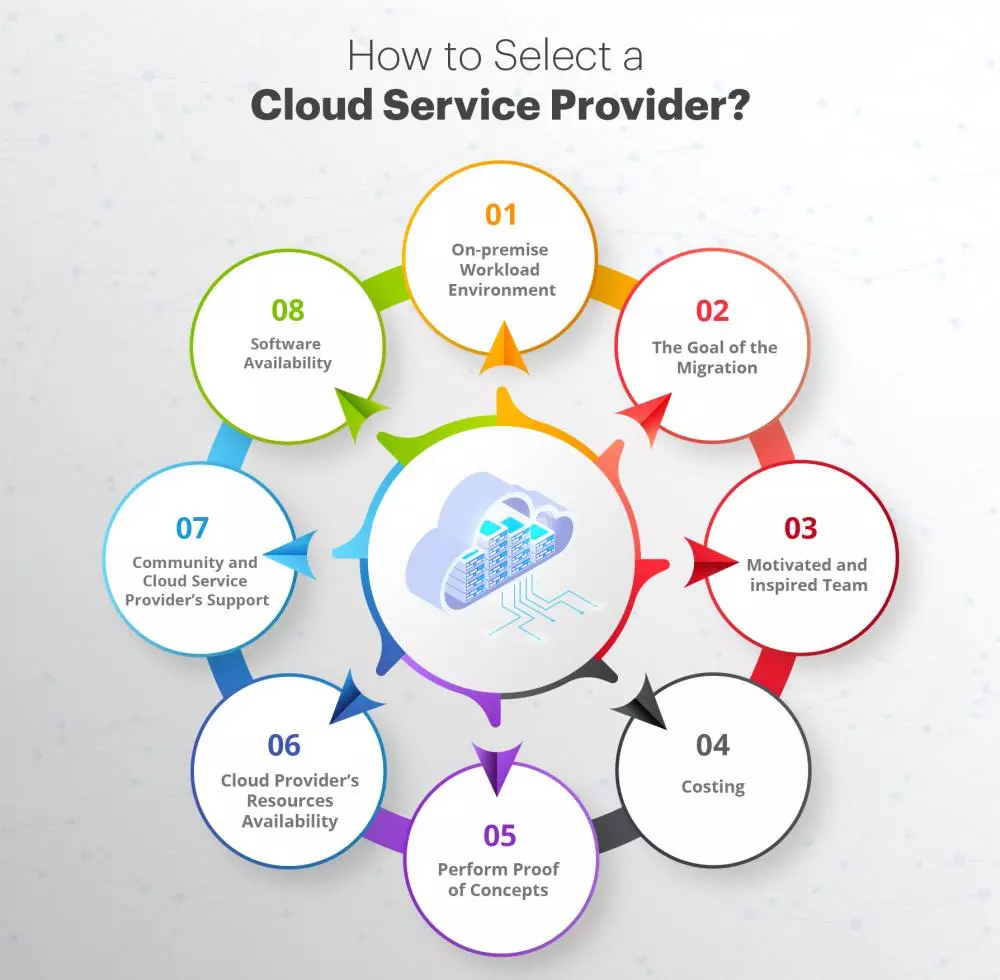Cloud adoption is all pervasive today – across industries, businesses and geographies.
One of the drivers for this high rate of adoption is the fact that cloud services support digital innovation by providing scalable and cost-effective solutions for software infrastructure, storage, security, connectivity and other specialised services. Cloud migration for enterprises of any size is therefore not a question of ‘if’, but of ‘when’ and more specifically, ‘how’.
Cloud Migration: The Big Question
Whether your organization is thinking of migrating its on-premise setup to the cloud or you are a consulting company that needs to offer a recommendation to the client; the biggest and the most fundamental challenge is to identify the right cloud service provider. The obvious top three names in this space are Amazon Web Services (AWS), Microsoft Azure, and Google Compute Engine(GCP). There are others too, but these three are the most mature and hence the most sought after providers. An important aspect to consider here is that not every provider suits every kind of requirement. While the spectrum of offerings may be wide, yet the choice has to pivot around the business needs that drive the cloud migration.
There are several instances where the companies who migrated their workload to the cloud realized much later in the journey that the chosen service provider was not the right one. Some of them have had to go back to square one and initiate migrating from one cloud to another. A deeper knowledge and understanding of cloud service providers therefore is required to make a wise decision. If the expertise on this subject is not available in-house, consulting cloud specialists for their expert opinion and recommendation is certainly a good idea.
The cloud system infrastructure services (IaaS) segment is forecast to grow by 30.5 percent in 2023 compared to 2022. The public cloud services market as a whole is expected to grow by 21.3 percent, with only cloud business process services (BPaaS) experiencing single digit annual growth rates.
Source Statista
How to Select a Cloud Service Provider?
Now that we have established the need to choose wisely, let us look at the aspects that you should consider before selecting a cloud provider. I bring you a checklist of eight.
1. On-premise Workload Environment
A thorough research and comprehensive knowledge of the on-premise workload environment that needs to be migrated to the cloud is fundamental to making the right decision. The workload environment includes the operating systems, software, network protocols and many other aspects. Below is a reference list of some elements that comprise this environment:
- Operating systems (Windows or Linux)
- Open source or license software requirements
- Public-facing or internal applications
- Application network port requirements
- Virtual machine hardening
- Dependencies on other applications
- Internal application releases
- Security concerns
- Application auto scaling capabilities.
2. The Goal of the Migration
After identifying the workloads to be migrated, the next important fix is to comprehend, ‘what do we want to achieve from this migration?’. The goal of the migration needs to be clearly defined and communicated correctly within the team and the enterprise as a whole. Everyone in the organization should know the benefits and the reasons why they are migrating the workload to the cloud. Below are a few reasons and benefits that organizations could consider:
- Accessibility for their customers
- On-premises hardware expiry
- Acquisition of additional hardware
- Organization expansion and subsequent auto-scaling
- Cost optimization
- 24 hours’ availability.
3. Motivated and inspired Team
Involving a well-rounded team in the migration plan and taking suggestions from them is often overlooked. Undoubtedly, an inspired and motivated team can be the secret ingredient and a big asset in the long migration journey. Here’s how you can inspire and motivate your team,
- Involve them in the migration discussions right from the start
- Take suggestions from them
- Discuss the goals, objectives and challenges
- Give appreciation to those who deserve
- Provide the required training.
4. Costing
It is important to know the cost benefits of each provider before arriving at the final decision. Compare the costs for the long term in a systematic and objective way. Here are some pointers on how to go about it:
- Create a Technical Oversight Committee (TOC) for 3 years to monitor and predict expenses
- Understand the cost for reserved, spot, and on-demand instances for services
- Compare the major expense component
- Do a region-wise comparison
- Compare the cost with Rehost, Refactor, Re-Architect, and Re-build strategy approaches
- Ask for discounts on specific types of resources that you would be deploying more and the regions where your workloads will be deployed
- Ask to omit or reduce the software and VM license cost for development and testing environments
- Understand the cost of hiring the resources for different cloud providers.

5. Perform Proof of Concepts
Select an appropriate workload to perform POC (Proof of Concepts) on all the cloud service providers you are considering. It will give you a correct overview of your environment and help you to visualize the actual results. You can also get an idea of whether your solutions will work on the cloud or not. Below are the points you can consider after POCs,
- Feasibility of the solution
- Architectural approach
- Cloud readiness and easiness
- DevOps and Automation
- Cloud running cost
- Software availability
- Performance on each cloud
- Scalability of each cloud.
6. Cloud Provider’s Resources Availability
Till this step you may have done everything right. From setting up the goal to comparing costs, motivating your team, and completing the PoCs. You may have even narrowed down your search to a chosen cloud service provider. However before starting the migration process, you will need to recruit specialist resources. That is when you may realize that the skillset for this provider is not available in the market and now your entire plan is at a risk. This problem is usually faced by service provider companies. Finding the correct candidate for your cloud migration project may feel like treasure hunting. If the specific cloud technology is rare, your company will need to spend more time and money to find the correct candidates. The availability of technical resources in the market for cloud service providers is therefore a critical aspect to factor. Some points to note,
- AWS is a more mature cloud service provider and so AWS skilled resources are available easily.
- Azure is now slowly gaining traction. So resources with Azure skillset are also available but not as easily.
- GCP is still in its nascent stage. Technical skills for the GCP cloud are not easy to find.
- Oracle, IBM and Alibaba are much behind in public cloud penetration and hence finding relevant resources will be very tough.
It goes without saying that cost of hiring resources will go up if their availability is low.
7. Community and Cloud Service Provider’s Support
Before selecting the cloud providers check their service plans, service support time and methods. Do make note of any add-on facilities. Also, check the community support available for the providers. Below are some points to consider along these lines,
- Cost of support
- Types of support (Email, Phone, Chat Video conference, etc.)
- SLA time
- Marketplace resource support
- Service support.
8. Software Availability
If you are using Rehost migration approach and you have some specific requirements for the software and its version, then it is worth checking its availability in the cloud service marketplace. Legacy applications usually face this issue of availability in the cloud environment.
Gartner predicts that by 2026, public cloud spending will be more than 45% of all enterprise IT spending. It was below 17% in 2021. The future is definitely on the cloud. For a smooth ride into the future, find a public cloud provider that works best for your organization.




